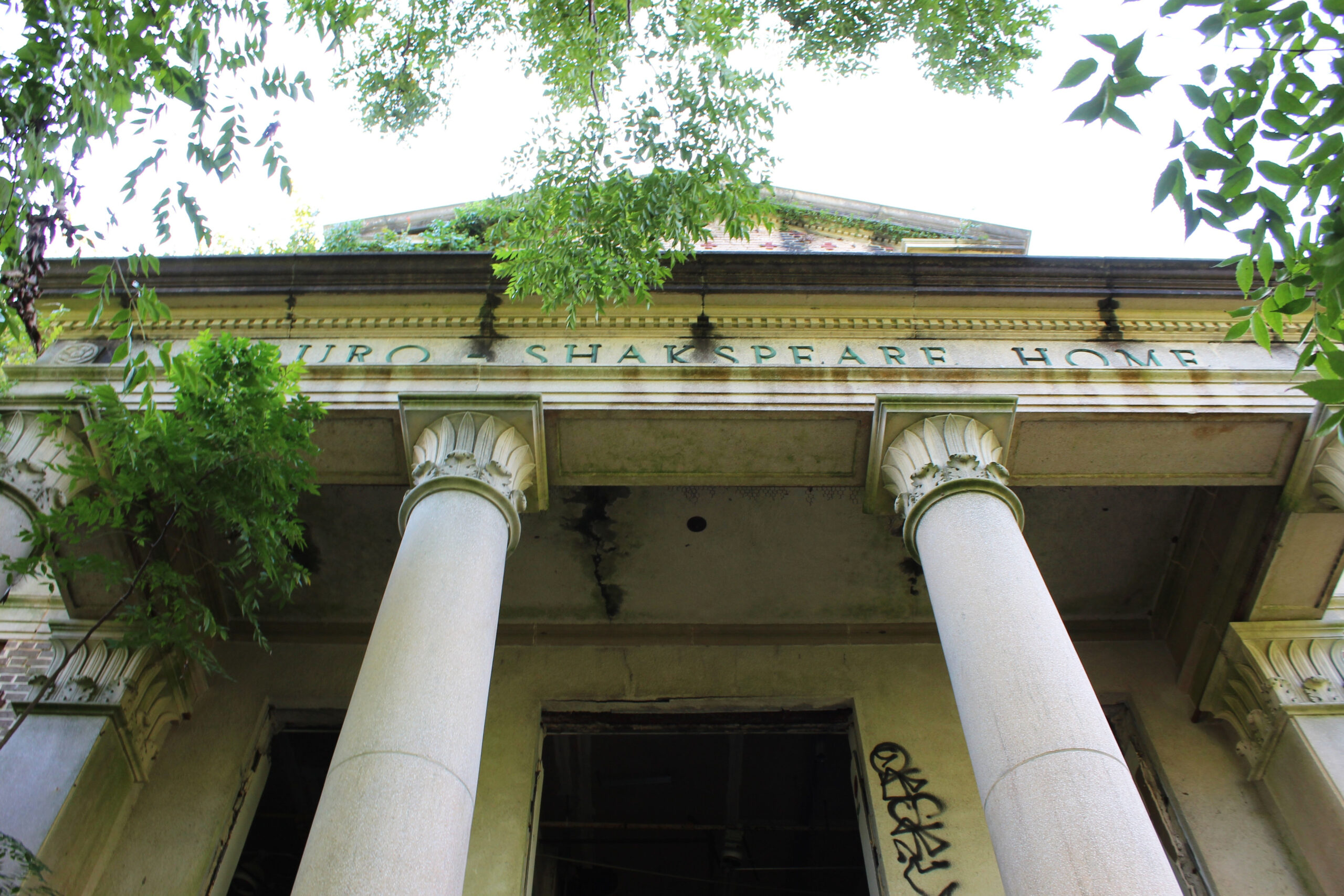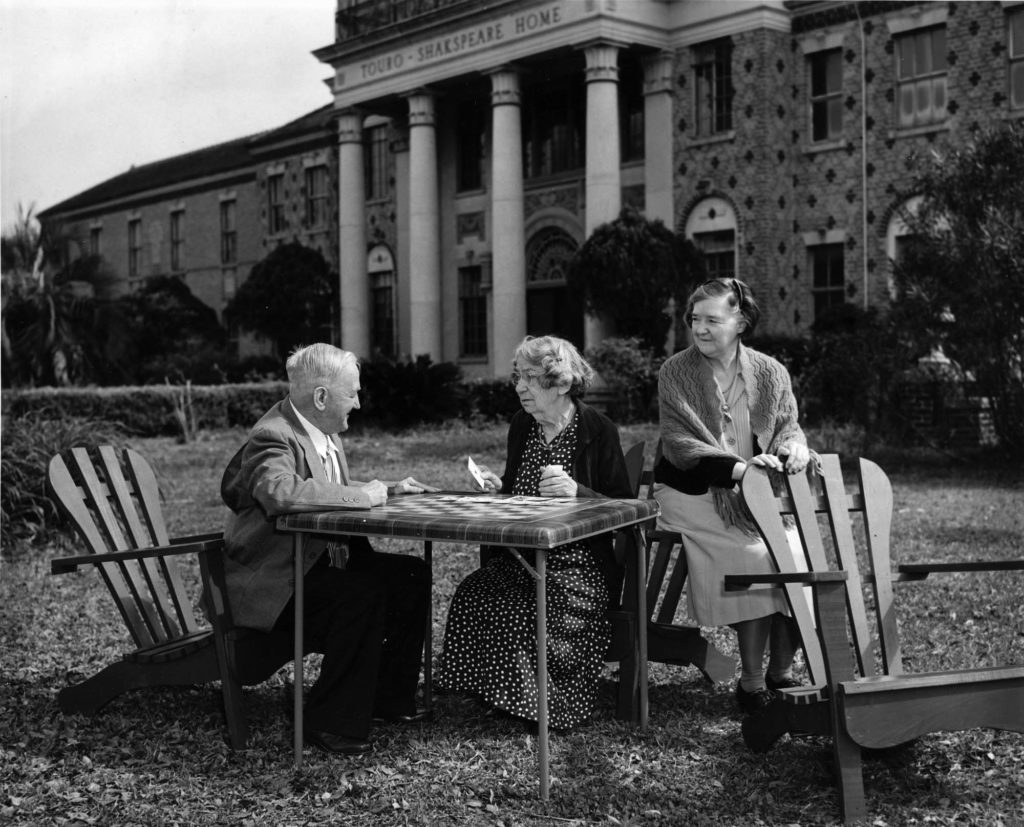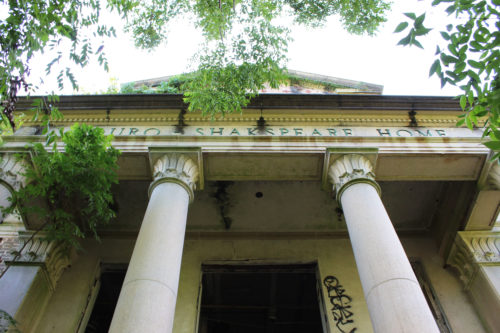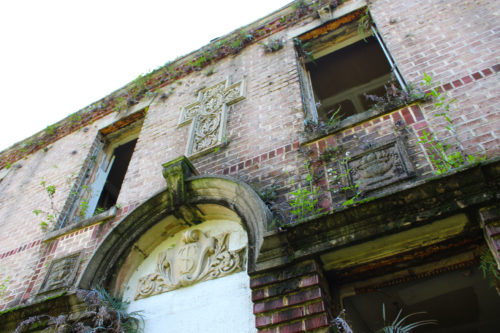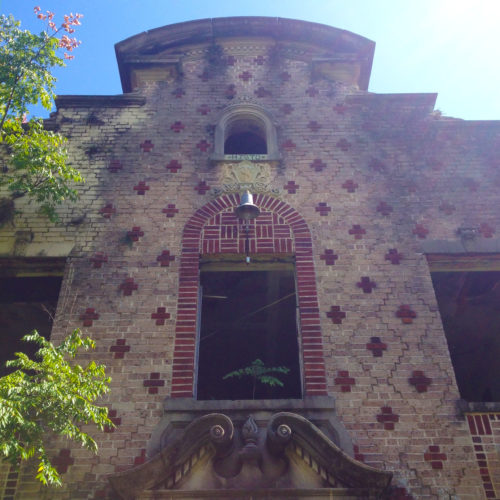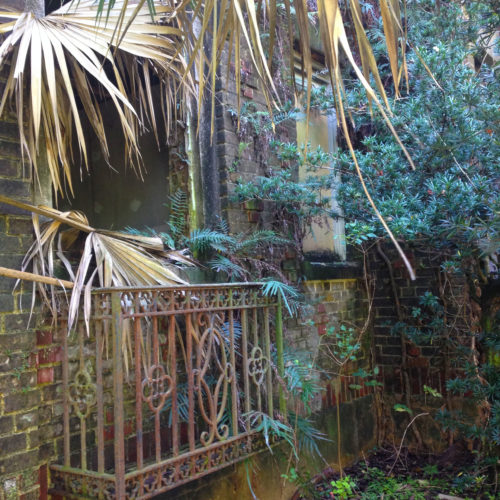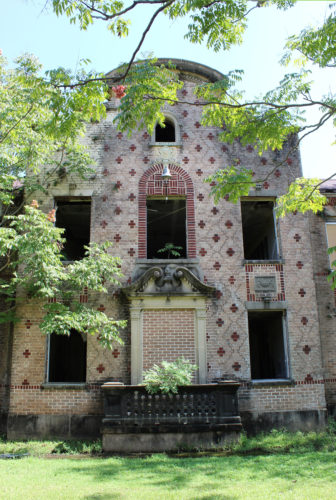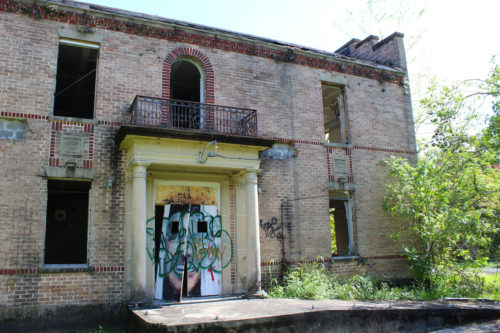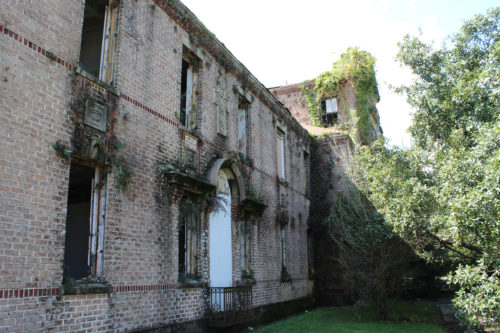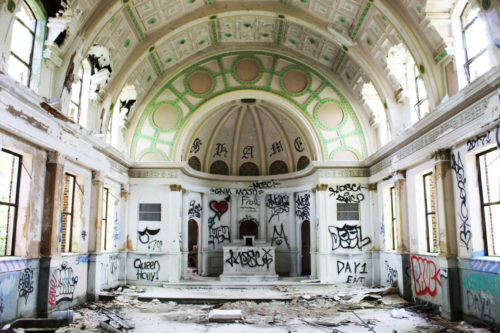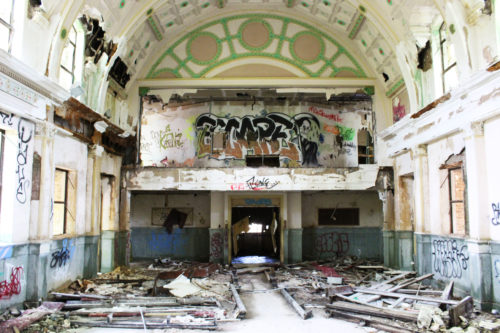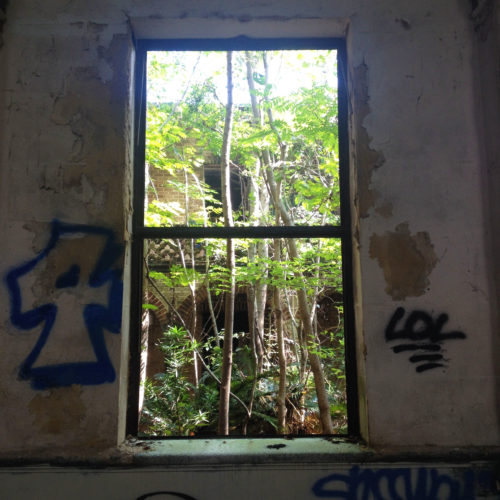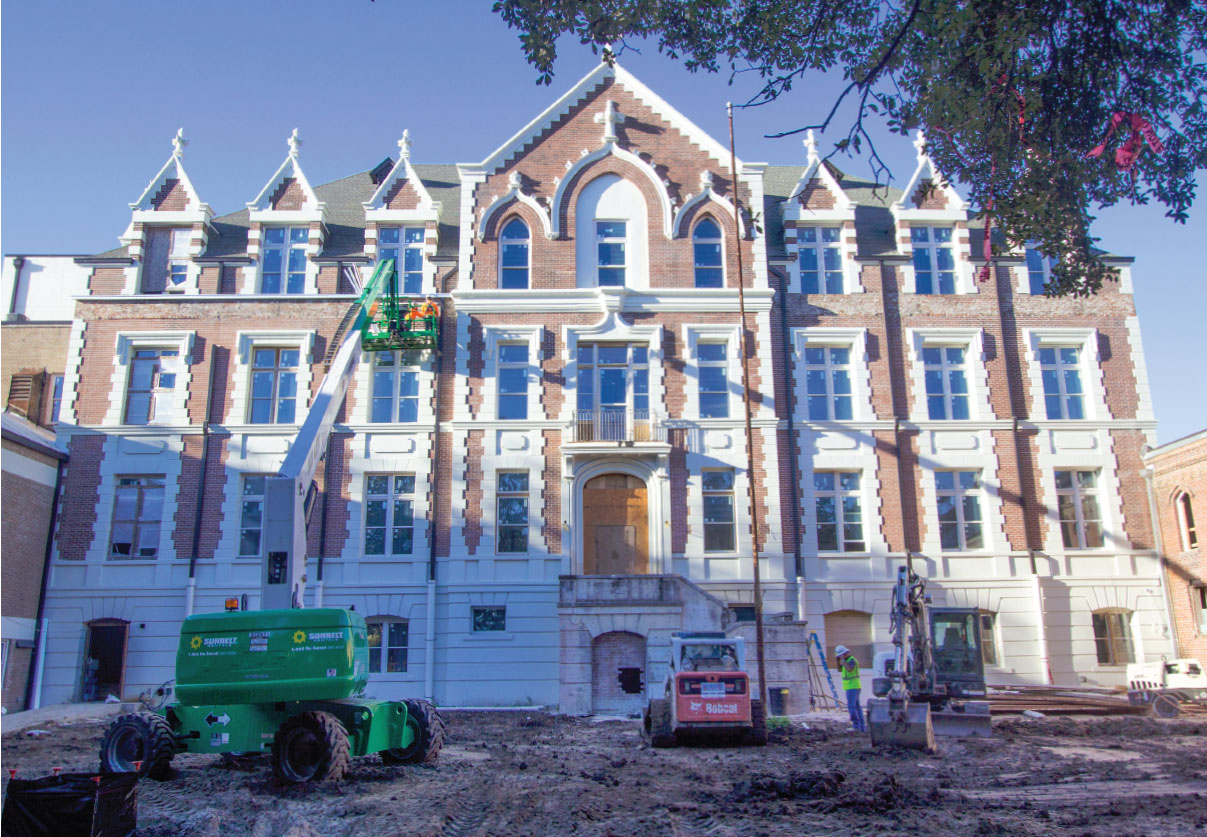The incredible but dilapidated Touro-Shakespeare Home, built in 1927 on New Orleans’ West Bank, has been vacant since incurring damage during Hurricane Katrina. A new shot at FEMA funding may see the building restored in coming years, however.
The first iteration of what became the Touro-Shakespeare almshouse was located in Bywater, established by philanthropist Judah Touro to house the city’s elderly poor. This towering Gothic structure, designed by William Alfred Freret, Jr., was completed in 1862 but was lost to a fire only three years later while acting as a federal base for Union soldiers and as a shelter for emancipated African Americans.
The second almshouse was constructed Uptown between 1894 and 1895 on Danneel Street. The building was funded through Mayor Joseph A. Shakespeare’s 1882 gambling tax and the interest gained from Touro’s original bequest to the city. The campus served its inhabitants away from the bustling metropolis in an idyllic country setting. As the neighborhood became more populated, the board of directors looked towards relocating the facility. In 1927, they worked with the city to purchase 42 acres in Algiers at a cost of $40,000.
In 1929, city finance officer T. Semmes Walmsley, who would go on to become mayor a few months later, along with the city’s administration, hired local architect William R. Burk to design the new Touro-Shakespeare Alms House for 200 residents. Burk’s Neo-Classical Revival and Jacobethan Revival-style design incorporated wings for men and women, which were separated by a non-denominational chapel, boiler room and kitchen. Burk was quoted in 1929 as stating that his theory of construction “calls for a building that is as beautiful and dignified as a private residence, but which also bears the stamp of being a municipal building.”
Construction commenced in December of 1932, Jed by contractors Caldwell Brothers and Bond Brothers. 1he three-story building was dedicated on October 26, 1933. It cost $228,000 to construct, and had space to care for approximately 175 residents.
The Touro-Shakespeare Home operated for years as a city-owned nursing home. This photo was taken in 1953 by Calvin G. Blackwell. Courtesy Louisiana Division/City Archives, New Orleans Public Library.
The impressive structure marked by diamond-pattern brickwork, stepped parapets and a grand columned front entrance remained in operation for 72 years – first as the city almshouse, and later as senior care facility owned by the City of New Orleans and managed by Touro Shakespeare, Inc. In 2005, in the days preceding Hurricane Katrina, 120 residents were successfully evacuated. Due to storm damage, they were never allowed to resume occupancy of the building.
In 2009, under the Nagin Administration, Jahncke & Burns Architects was contracted to design a restoration plan for the building. In 2010, that contract was extended to include review and supervision of the construction phase of the project. However, the restoration was never completed and the City abandoned the project. Since its abandonment, deterioration has continued to affect the structure, leaving the 20-foot domed ceiling chapel, lush enclosed courtyards, and numerous residential occupancy rooms in a state of ruin.
Due to concerns about the possibility of demolition by neglect, the Louisiana Landmarks Society placed the structure on their 2015 New Orleans Nine watch list.
Last year, the City appealed to FEMA to draft a Section 106 Review in order to mothball the property. After review, FEMA informed the State Historic Preservation Office that they would provide funding to “render the Touro Shakespeare Home safe and secure.” This work would include lead paint, mold and asbestos abatement, the removal of debris and nonhistoric building materials, and the installation of security measures.
This anticipated project has yet to be scheduled, but one is left to wonder how long the building must remain either completely abandoned or simply safely decommissioned before a plan for its revitalization is made. FEM A-authorized Public Assistance funds are also possibly being used at adjacent Behrman Park, on General Meyer Avenue in Algiers, to fund a new indoor pool facility and outdoor splash park. Over the last few years, the park has been the recipient of close to $4 million in improvements supervised by New Orleans’ Capital Projects Administration. With so much revenue being funneled into improvement projects at Behrman Park, it would seem advantageous for the City to bring the building back into use, or allow a private entity to do so.
Photos by Heather Veneziano




